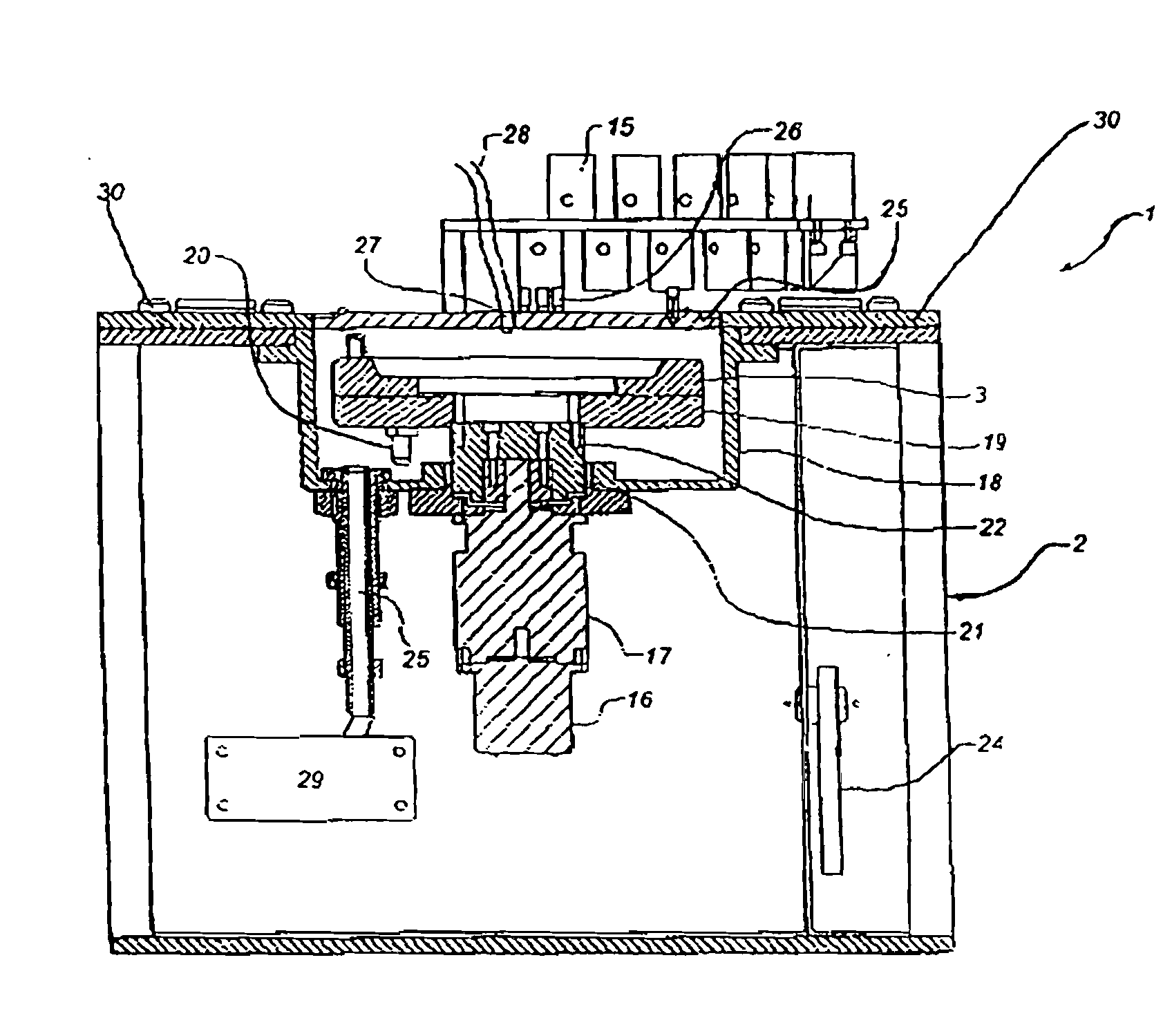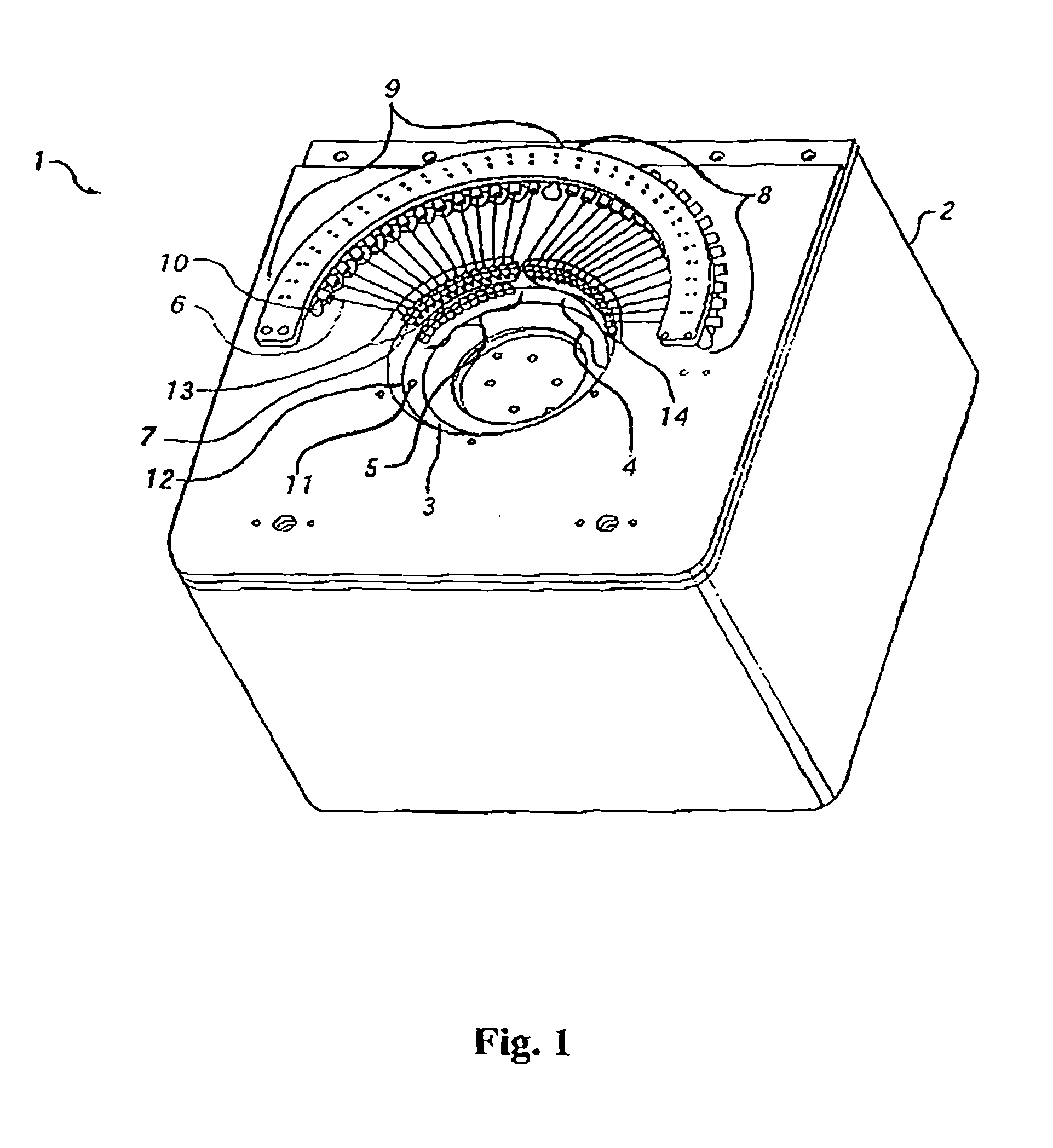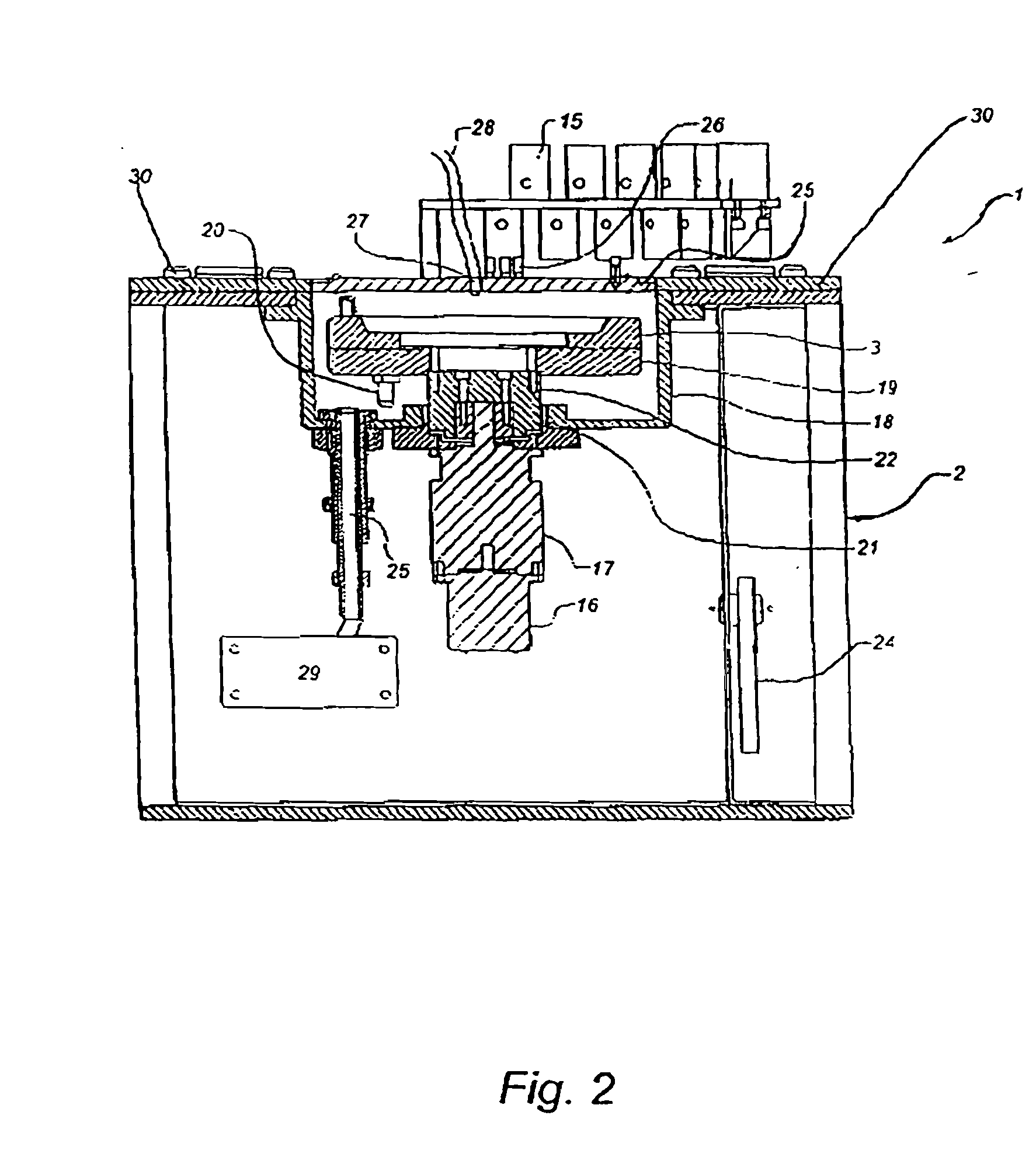Nucleic Acid Synthesizers
a technology of nucleic acid and synthesizer, applied in the field of nucleic acid synthesizer, can solve the problems of reducing or losing the synthesis efficiency, normal operation, and emitted undesirable gaseous or liquid materials, and achieve the effect of reducing or preventing the flow of fumes and emissions
- Summary
- Abstract
- Description
- Claims
- Application Information
AI Technical Summary
Benefits of technology
Problems solved by technology
Method used
Image
Examples
example 1
The Northwest Engineering 48-Column Oligonucleotide Synthesizer
[0305]The Northwest Engineering 48-Column Oligonucleotide Synthesizer (NEI-48, Northwest Engineering, Inc., Alameda, Calif.) is an “open system” synthesizer in that the dispensing tubes for the delivery of reagents are not affixed to each synthesis vial or column for the entire term of the synthesis process. Instead, movement of a round cartridge containing the columns allows each dispensing tube to serve multiple columns. In addition, when a synthesis column is positioned to receive reagent, the dispenser is not even temporarily affixed to the vial with a sealed coupling. The reagent dispensed to the vial has open contact with the surrounding environment of the chamber. The chamber containing the synthesis vials is isolated from the ambient environment by a top plate. The general design and operation of the NEI instrument is described in WO 99 / 656602.
[0306]The NEI-48 synthesizer includes external mounting points for var...
example 2
The Applied Biosystems 3900 Oligonucleotide Synthesizer
[0318]The Applied Biosystems 3900 Oligonucleotide Synthesizer (Applied Biosystems, Foster City, Calif.) is similar in design and function to the NEI-48, described above. The 3900 is an “open system” synthesizer utilizing a round cartridge containing the columns. The receiving holes of the cartridge are essentially cylindrical, and, as with the NEI-48, proper function of the instrument relies on an airtight seal between the columns and cartridge.
[0319]The 3900 synthesizer includes recessed areas for the external mounting of reagent bottles. When mounted on the instrument, the reagent bottles do not protrude beyond the outside edges of the instrument; they are completely recessed, (as, e.g., the reagent reservoirs 72 are recessed in base 2, diagrammed in FIG. 13A). As with the NEI-48, the reagent feeding is done under pressure from an argon gas source.
[0320]The performance of the 3900 synthesizer is improved using the modification...
PUM
 Login to View More
Login to View More Abstract
Description
Claims
Application Information
 Login to View More
Login to View More - R&D
- Intellectual Property
- Life Sciences
- Materials
- Tech Scout
- Unparalleled Data Quality
- Higher Quality Content
- 60% Fewer Hallucinations
Browse by: Latest US Patents, China's latest patents, Technical Efficacy Thesaurus, Application Domain, Technology Topic, Popular Technical Reports.
© 2025 PatSnap. All rights reserved.Legal|Privacy policy|Modern Slavery Act Transparency Statement|Sitemap|About US| Contact US: help@patsnap.com



